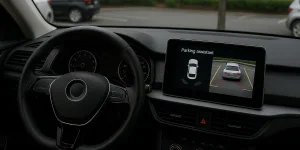What’s worse than being stuck in a traffic jam? How about circling endless rows of cars, hunting for a parking spot only to discover one depressingly tight, tiny space? However, with just a tap on the app, a “parking assistant” springs to life, aided by vehicle sensors and cameras that guide the vehicle silently and smoothly into the narrow lot. And nope, these are no longer just screen demos but part of daily life for some nowadays, all thanks to advanced driver assistance systems (ADAS).
Indeed, experts have long discussed the growing trend of ADAS adoption. So what exactly is ADAS calibration, what is its market potential, and how can sellers tap into it to unlock new business opportunities? Read on to find out.
Table of Contents
An overview of ADAS
Understanding advanced driver assistance systems (ADAS)
Key ADAS applications on the market
What does ADAS calibration mean?
Market overview
Business opportunities in ADAS calibration
Starting an ADAS calibration service
Opportunities for mobile calibration services
Franchising ADAS in the calibration sphere
Gear up for opportunities
An overview of ADAS
Understanding advanced driver assistance systems (ADAS)
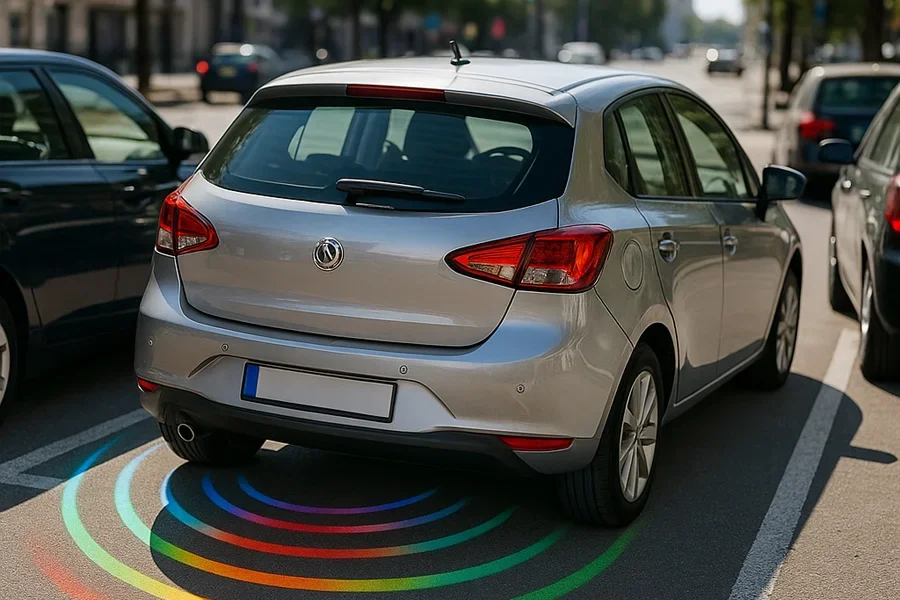
Let’s begin by taking a holistic look at the core components involved in ADAS. For starters, the term “system” in ADAS – advanced driver assistance systems – refers to a complete set of components, not a single unit. In other words, ADAS represents an umbrella term covering many distinct safety and convenience technologies meant to enhance driver safety and comfort.
More specifically, ADAS works on a suite of integrated vehicle technologies that combine both hardware and software via three main categories:
- Physical hardware components (such as sensors, cameras, and radar)
- Electronic control units (ECUs)
- Software algorithms
From auto parking to pedestrian detection, these elements work together to monitor the vehicle’s surroundings, assist the driver with routine tasks, alert the driver, or intervene (such as by braking or steering) as needed to help prevent accidents.
Key ADAS applications on the market
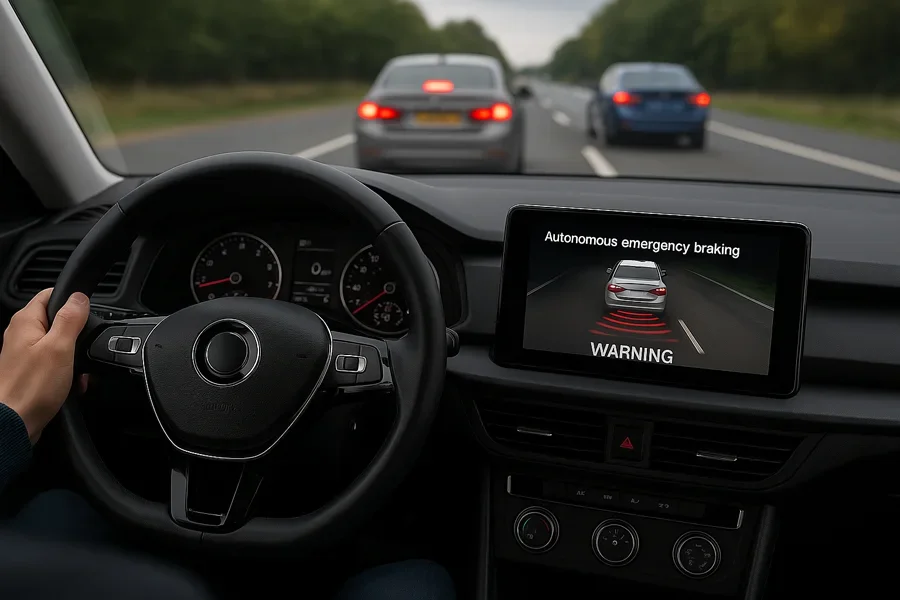
As the name implies, ADAS are always plural, since they cover multiple systems. Some of the most common systems include:
- Anti-lock braking system (ABS): One of the earliest fundamental forms of ADAS, tracing back as early as the 1970s, ABS prevents wheel lockup under hard braking and supports stability under adverse weather. Today, this system is fitted on nearly every modern vehicle to maintain steering control.
- Adaptive cruise control (ACC): Popular for highway comfort, ACC automatically adjusts speed to maintain a set gap from the vehicle ahead and is increasingly standard on family sedans and SUVs.
- Autonomous emergency braking system (AEB or AEBS): Steadily rolled out to automatically brake for imminent collisions, AEB is the active‐safety feature most widely required by law worldwide, including Australia, the USA, and the EU.
- Automatic parking system (APS or PA): From simple rear-view sensors to full “steer-by-wire” parking assistants, APS is becoming a prevalent convenience feature on many new high-end vehicles.
- Blind-Spot Warning/Information System (BSW or BLIS): Fitted with radar or ultrasonic sensors, BSW warns of unseen vehicles in adjacent lanes and has become a frequent “premium-plus” feature in many segments.
- Electronic Stability Program (ESP): Installed to counter oversteer/understeer and reduce rollover risk, ESP has become a de facto safety baseline on mid- to high-end cars, and increasingly ubiquitous even on entry-level models too.
- Tyre Pressure Monitoring System (TPMS): TPMS is now a safety staple across all new passenger vehicles in both Europe and the United States, as the system is legally required to alert drivers to low tyre pressure.
What does ADAS calibration mean?
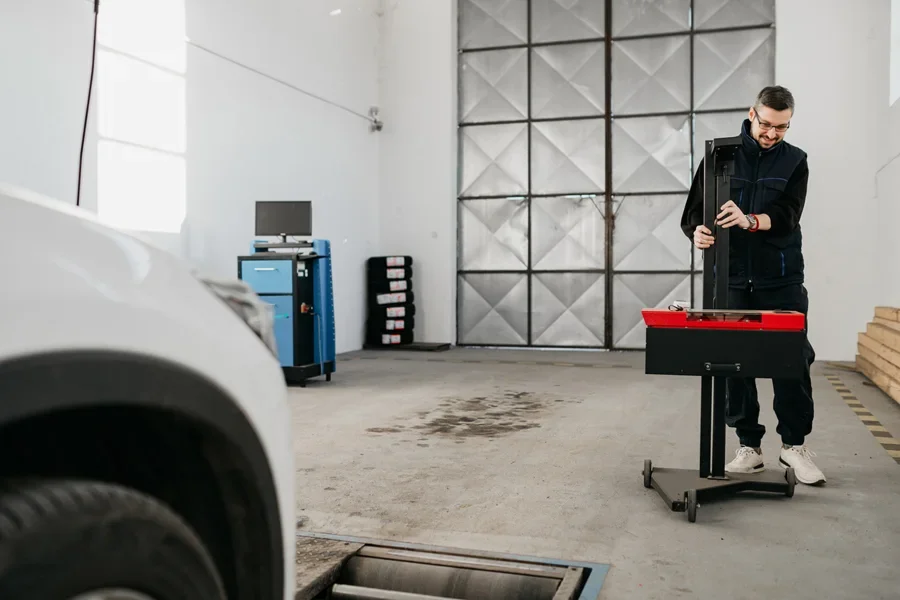
ADAS calibration is a precision procedure that realigns a vehicle’s cameras, radars, lidars, ultrasonic sensors, and related control modules to factory geometry. Depending on the OEM requirements, the procedure involves static target alignment, dynamic road-learning, or a combination of both. In line with the nature of the physical hardware involved, ADAS calibration is clearly necessary.
Sensors, cameras, radar, and lidar, for example, are all highly sensitive and prone to slight deviation. Even a one-degree misalignment can cause ADAS features to miss by over 67 feet, which drastically extends stopping distances. Such a subtle shift can move the detection zone enough to skip lane markings or obstacles, causing delayed or incorrect warnings.
That’s why, after windshield replacement, collision repair, suspension, and wheel-alignment work, sensor swaps, or illumination of an ADAS warning light, virtually any hardware change or incident may warrant an ADAS calibration since the accuracy of the hardware is compromised. However, although these factors suggest that ADAS calibration is primarily event-triggered, there are industry sources that recommend routine recalibrations every 24-36 months or around 30,000-50,000 miles intervals, even though most manufacturers do not mandate it.
Hence, any vehicle equipped with cameras, radar, or lidar will eventually require calibration when those sensors are disturbed. All of this accentuates why precise calibration is critical in ensuring the reliability of all ADAS features, making professional service essential.
Market overview

With a basic understanding of ADAS and its calibration processes in mind, let’s examine the global market potential of the ADAS sector. In 2024, according to Statista, the global ADAS sector pulled in almost USD 58 billion, and the figure is on track to grow more than double, surpassing USD 125 billion by 2029. ADAS technologies like self-parking, automatic emergency braking, and adaptive cruise control (ACC) are key examples driving this expansion.
In line with the overall industry growth, spending on related ADAS calibration equipment is expected to surge from about USD 352 million in 2025 to roughly USD 1.03 billion by 2035, reflecting an impressive double-digit compound annual growth rate (CAGR) of 11.3% throughout the forecast period. Among all the regions, the United States is projected to spearhead North American demand and exhibit the fastest growth.
Business opportunities in ADAS calibration
Starting an ADAS calibration service

Reportedly, as high as 80% of auto repair shops and glass repair centers lack sufficient facilities to perform proper ADAS calibration services. This naturally indicates a growing demand for specialized calibration centers since most repair shops must outsource calibration services. This shortage is understandable given the stringent safety requirements for ADAS calibration. It is a process that not only requires specialized ADAS equipment but also controlled environments with precise specifications for space, flooring, and lighting.
Such a setup is crucial for static calibration, which is essential for features like forward-facing camera alignment systems and radar-sensor aiming as per OEM specifications, since outdoor setups are insufficient for precise sensor alignment and will lead to misalignment. Put simply, this procedure requires spacious bays, perfectly level floors, and even lighting to align sensors accurately.
The definition of “spacious” here is a clear, unobstructed bay of around 30 by 45 ft (ideally 40 by 60 ft) to roll large ADAS calibration target boards into position and to move the vehicle without disturbing the setup. Meanwhile, the floor must be absolutely level (no more than ±10 mm deviation) across the entire calibration area to maintain precise target geometry. Walls and floors should be matte, non-reflective, and lit by uniform, flicker-free LEDs to prevent shadows or glare that can confuse ADAS parts. Finally, precise floor markings or laser reference lines must be installed to ensure calibration positioning with millimeter accuracy.
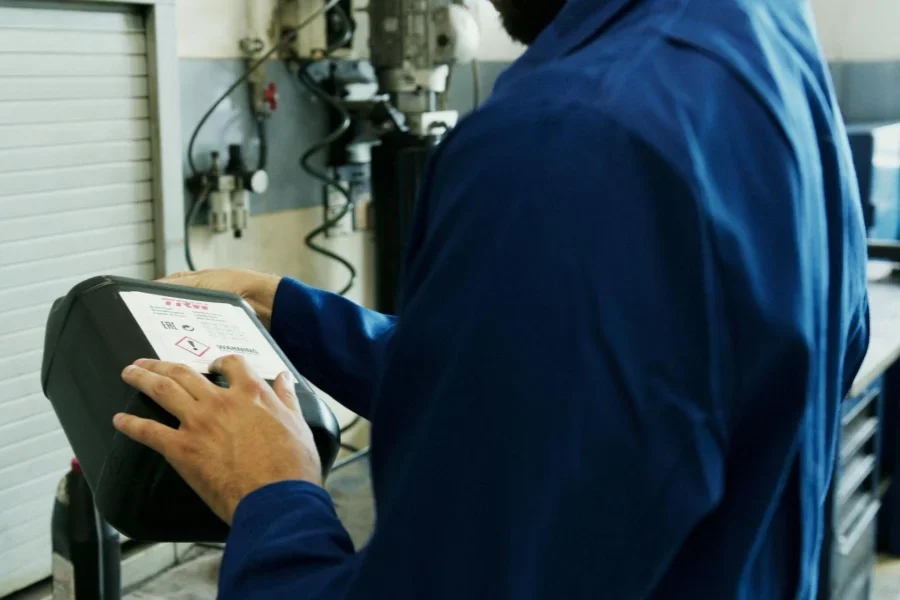
While all these facilities may involve substantial investment for a dedicated ADAS bay with a necessary ADAS calibration system and ADAS calibration tools included, thankfully, the reward is equally lucrative. For ADAS calibration businesses with annual sales of USD 500,000 or more, experts report that they can achieve 60% gross margins. Indeed, ADAS calibration service prices are reportedly around USD 250-450 per feature. OEM dealerships typically charge more, so independent providers of these services are advised to set prices at 70-80% of those rates to stay competitive.
Meanwhile, since most regulations and insurers demand verifiable records, each step of ADAS calibration typically needs to be documented in a certified report. While such documentation incurs additional costs and administrative work, it actually creates more high-value opportunities than it costs in overhead, as a relatively basic maintenance procedure is transformed into a premium, regulated ADAS service that allows higher margins and repeat business.
Opportunities for mobile calibration services
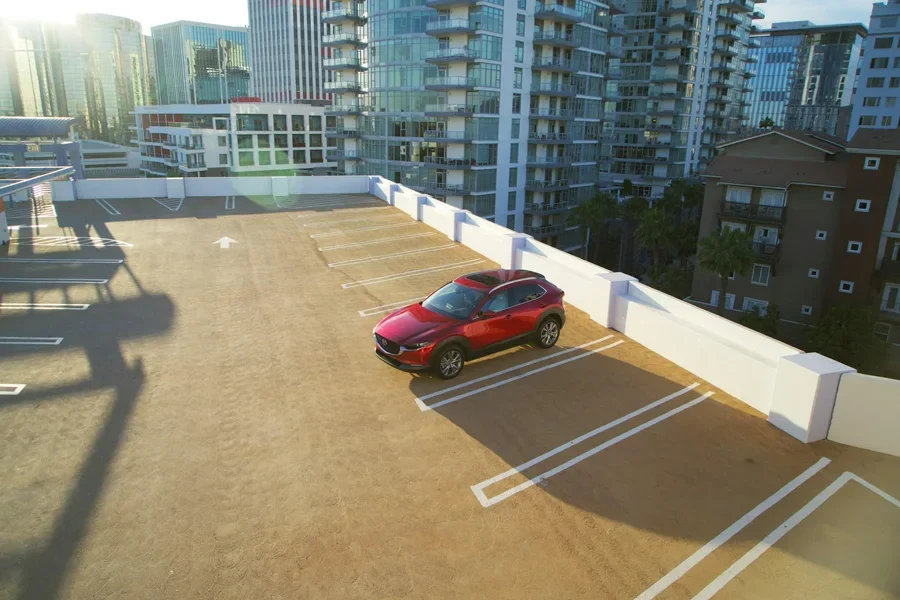
The rising demand for dynamic-only calibrations, particularly for features such as lane-keeping assist and adaptive cruise that self-tune with real-world references, signifies another booming opportunity for shop owners. What’s more, as a mobile calibration service provider, setup costs are significantly lower than for a fixed static ADAS calibration center, as there’s no need for a large, leased ADAS bay (minimum 30 by 45 ft), but can simply operate from a van.
This is fully attainable since most mobile ADAS calibration equipment is lightweight and portable, with foldable ADAS calibration frames on wheels, compact laser reflectors, and built-in scan tool interfaces. In other words, these ADAS mobile calibration tools fit in a van and deploy on any flat surface for dynamic self-calibrations. Some high-end models also perform limited static jobs such as headlight aiming and lane-keep camera calibration, empowering mobile calibration providers with a more versatile role that expands their clientele and boosts revenue.
More importantly, aside from operating independently as a service provider with portable ADAS mobile calibration equipment, this opportunity can also extend to automotive dealers and glass shops as a bundle service, together with other necessary collision repair tasks for a complete vehicle service.
This is perfectly doable, especially if they utilize hybrid ADAS calibration kits capable of both dynamic and static support. By offering both on-site and static calibration, the two services can be combined in one to enable premium pricing and appeal to a broader market segment.
Franchising possibilities in the ADAS calibration field

For anyone thinking of capitalizing on the growing wave of ADAS calibration business opportunities but lacking experience or a skill set, or shying away from the high investment and monthly overhead caused by the extensive space requirements of an ADAS calibration center, a franchise model for mobile ADAS calibration systems or a structured turnkey business package may be a more cost-effective and flexible solution.
Most ADAS franchise packages in the market now provide a ready-to-launch, standardized calibration service model, including standard training, tech, and administrative support. Furthermore, many of these offerings cover financing for ADAS calibration machines and discounted ADAS equipment, greatly easing the upfront and ongoing costs of ownership.
Some ADAS franchise brands go the extra mile by offering not only calibration services but also glass repair and replacement, as well as other minor cosmetic repairs for automobiles. On the other hand, there are established-brand offerings that include “guaranteed territory with existing customer base,” giving direct entry into a growing calibration market with minimal operational risks and clearly defined procedures.
All in all, these franchise models offer rapid expansion potential for entrepreneurs, including those with zero or minimal background in the automotive industry. They provide necessary training, equipment procurement, marketing support, and national or international brand recognition in the ADAS calibration field, presenting a compelling opportunity for entrepreneurs.
Gear up for opportunities
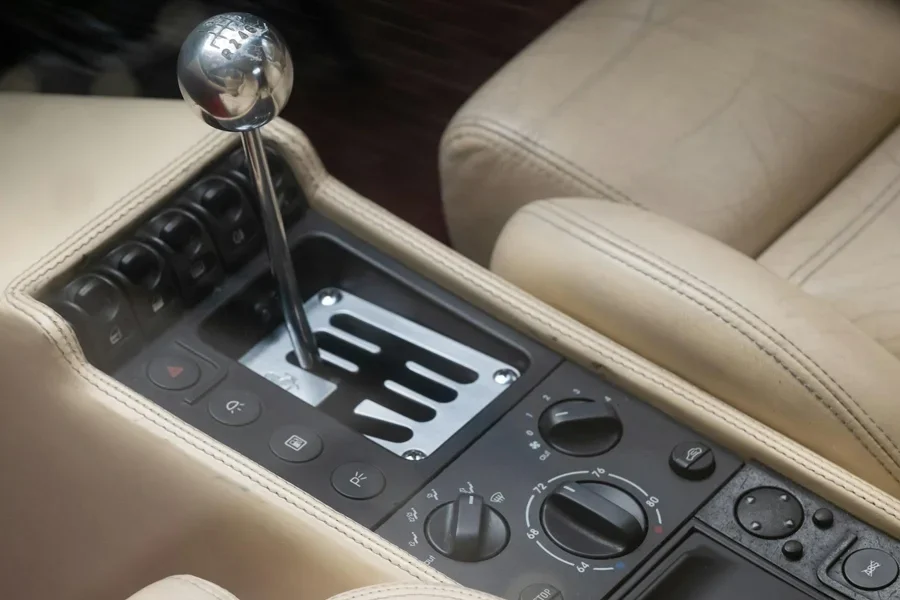
The advanced driver assistance systems refer to a set of different systems that aim to enhance drivers’ comfort and safety on the road. These systems include hardware components, electronic control units, and software tools that work together to assist drivers with routine tasks and monitor the vehicle’s surroundings.
ADAS repair service is necessary to ensure the accuracy of physical ADAS components, including sensors, cameras, lidars, and radars, particularly after a collision, hardware change, or incident. The global ADAS industry is expected to grow steadily, with ADAS calibration equipment projected to see an aggressive double-digit CAGR through 2035. To capitalize on the ADAS wave’s momentum and seize opportunities, entrepreneurs can consider establishing an ADAS calibration center, exploring mobile calibration services, and exploring franchising possibilities.
For more vehicle-related business insights, wholesale business ideas, and market trends, visit Alibaba.com Reads regularly. Latest logistics insights, sourcing inspiration, and updated wholesale market intel – all available to explore for free.
